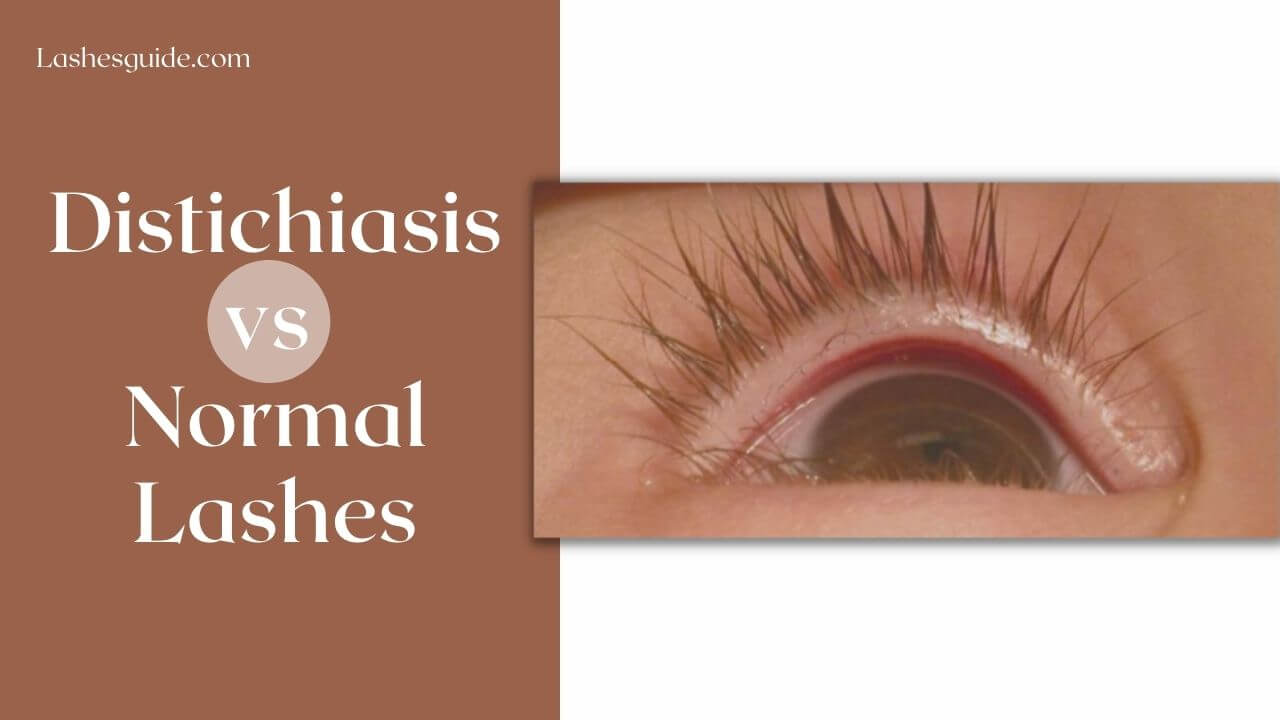Those wondering about the difference between distichiasis Vs normal lashes have to understand the difference between the two conditions. The former is an acquired abnormality characterized by misdirected growth of eyelashes. As a result, these extra strands can cause irritation to the ocular surface, ulceration, scarring, or both.
The difference between normal and distichiasis is not always easily discernible. It can occur in any eye, but it is characterized by a separate row of eyelashes behind the normal eyelashes. These lashes lack pigment and can be so fine that they can irritate the cornea. There are several forms of distichiasis, including a full row of lashes or a row of irregular lash tufts. This condition may be congenital or hereditary. Some people with distichiasis will experience discomfort as the extra lash strands protrude from the lids. However, many patients show no clinical signs and do not require any treatment.
Unlike normal lashes, distichiasis is a rare condition that occurs on one or both eyelids. The condition can be either congenital or acquired and can affect the eye’s entire or lower lids. The disorder is usually not inherited, but a genetic mutation in the hair follicle can cause the condition. As a result, distichiasis can be difficult to recognize.
Difference Between Normal Eyelashes vs Distichiasis
The main difference between distichiasis and normal lashes is the length and thickness of the hair on the eyelids. In distichiasis, the second row is thinner than the first. In this case, the distichiasis is usually unilateral. The condition is very common in some individuals. The eyelashes of such individuals are thin and fall out regularly.
A distichiasis patient may have two rows of eyelashes on each side of the eyelid. This condition is more common in women than men and can be inherited or acquired. If a person suffers from distichiasis, the extra eyelashes are not a problem on the outer side. In fact, they are a normal part of the eyelid.
The other difference between normal and distichiasis lies in the location of the extra lashes on the eyelid. In people with distichiasis, extra lashes are found behind the normal lashes. These extra lash clumps can cause corneal irritation. In the case of acquired distichiasis, the eyelashes are usually not pigmented.
Distichiasis and their Causes

There are many possible causes of distichiasis, including inherited disorders and eyelid disease. The main cause of distichiasis is an overproduction of eyelashes. This can cause irritation to the ocular surface and may lead to ulceration and scarring. People with distichiasis will have extra lashes on one or both eyelids. Fortunately, most of these conditions are harmless, but they can still lead to other problems.
Another common cause of distichiasis is inherited. Affected people may have one or two rows of eyelashes on one or both of their eyes. Those with a full set of lashes will experience asymmetric lash growth. Unlike those with a normal eyelid, this distichiasis can be inherited or acquired. However, both conditions are often accompanied by associated conditions, such as an abnormal sensitivity to light or a weakened cornea.
How to identify distichiasis?
When we compare Distichiasis Vs Normal lashes, it is evident that lashes in the state of distichiasis are thinner as compared to normal lashes. A distichiasis is an abnormal condition in which the eyelashes grow in different directions. The extra lash growth is characterized by irregular growth patterns and is either a full set or a partially developed distichiasis. It is a rare genetic defect that affects the eyelids and causes the extra lashes to fail to form a full set of flakes.
The number of extra eyelashes may vary from a few to full lashes. A routine examination may not pick up this asymmetry because the extra eyelashes are too small to be noticeable. However, the associated abnormalities can cause eye irritation and discomfort. This is why the doctor may recommend treatment for distichiasis. The patient may also undergo procedures to remove the excess lashes. In most cases, proper care is necessary to avoid any complications.
Symptoms of distichiasis
Another common symptom of distichiasis is baldness of the eyelids. This condition is rare but can be difficult to spot. The condition may also be accompanied by other problems, such as an abnormal sensitivity to light or inflammation of the eyelid’s conjunctiva. A person with this disorder may experience symptoms like redness, swelling, and dryness and may experience pain.
In some patients, extra lashes grow on the eyelid margins. This is an abnormal growth pattern. The eyelashes should not grow in this area. The condition can be inherited or acquired. Some cases may be severe, while others may have no symptoms at all. It is important to consult a doctor if you have a family history of distichiasis. Affected individuals can also experience a variety of symptoms, including double eyelashes.
Other symptoms include irritation, red eyes, and eyelid pain. The condition can be inherited or acquired. Among those with this gene disorder, the eyelashes are uneven, and if you experience irritation, you must consult a doctor.

